A few weeks back, I speculated on whether the A100 was Sony’s low end SLR. (So, just what is a low-end dSLR camera anyway?) Now it time to look in the other direction. What does Sony have on tap for an Alpha Pro level SLR?
Before we go any further, let me go on record as saying that I am uncomfortable about the use of the term “Pro” when it comes to cameras. Real, honest to goodness pro photographers use what ever camera appeals to them. (Or in many cases, whatever camera their employer supplies them with.) Real pros use their knowledge and experience to create breathtaking, impossible to forget images. The camera is simply a tool. While they may prefer a particular tool over another, the genius behind the photograph occurs in the “little gray cells,” not in a camera’s CPU or sensor. It is only in camera advertisements that you hear pro photographers saying stuff like “My – insert camera name— allowed me to capture this prize winning shot. In real life, a pro would say I CAPTURED this prize winning shot.
Thus it is hard for me when someone asks if a specific camera could be used to take professional pictures. If the definition of a professional picture is one that is sold for money — then indeed any camera could be considered a pro model. A few weeks back, I wrote about how I got my start in film photography with an old Wirgin stereo camera. I wasn’t a professional at the the time, so I consider most of the images shot with the Wirgin as training shots. However, many years after I made the move to professional photographer, I sold a magazine article that was illustrated with some of the old shots I had taken with the Wirgin. Does that make the Wirgin a professional camera? I have also sold some shots taken with an old Kodak 110 pocket camera.
So I believe almost any camera can be used to take salable pictures. After all, if an UFO landed in your backyard so Elvis could grab a burger at the local fast food joint, do you think any publication in the world would care what camera you recorded the scene with? As long as the images were recognizable and could be proven to unaltered, you could retire off the sales of that single picture, regardless of the camera involved.
Of course, that doesn’t mean that pros aren’t picky about which cameras they shoot with. Most select their cameras with great care. Their hardware choices, however, are often predicated by their subject and environment. In addition, other equipment may dictate which camera is selected for a particular shoot.
The Alpha A100 is generally considered a “consumer grade” camera, although the camera is more than able to take pro grade images. While the average person judges a camera primarily on the images it produces, a true working pro uses many other criteria.
For many studio photographers, the A100’s biggest failing is the lack of a standard PC flash sync connection. For reasons best known to Sony, the A100 doesn’t provide a standard PC sync connector. (We’re taking about a flash connection here. It has nothing to do with computers. The photographic PC connection existed long before the first personal computer came on the scene.)
This isn’t a complete deal breaker. There are adapters available and wireless external Flash is also available. A pro, however, doesn’t want to have to buy additional equipment. They want a reliable camera that works with the existing lights and flash triggers they already own, For these people, the lack of a PC sync connection is a black mark against the Alpha.
I have already pointed out that I was disappointed to see that the A100 lacked the ability to be controlled by a remote computer. (The major missing feature) While not every pro needs this feature, many pros will find this unacceptable.
The Alpha A100 ISO range tops out at 1600 — limiting if you need to shoot in dim light with long lenses and /or fast shutter speeds.
Then there is the frame rate for motor-driven sequences. The A100 boasts a continuous 3 fps until the memory card is filled. That isn’t bad, but some pros need a faster frame rate.
Flash sync on the A100 is limited to 1/160 second. That can be problematic if you want to use fill- flash in the daylight. Many pro dSLRs offer flash sync to 1/500 second.
Finally, the lack of an external vertical grip continues to annoy many prospective A100 buyers. I’m not certain how many pros would consider this a necessary feature, but the post I wrote on DYI vertical grip options for the A100 has been the single most popular post on Alphatracks.
None of these drawbacks precludes the A100 from being used as a pro camera. Taken as a whole, however, they limit the Alpha SYSTEM from a pro’s vantage point.
I’m not sure that any digital SLR camera, from any manufacturer, has all of these features in a single model. On the other hand, few photographic assignments would require all of these features to be used at one time. When you buy into the Canon or Nikon system, you can mix and match bodies and accessories to address all of the areas I have listed. You might not need a certain feature today. If a high-paying assignment turns up tomorrow, however, you can add a body or accessory that allows you to use your existing equipment in new ways.
The Alpha A100 stands alone in Sony’s product line-up, although the Maxxum 7D and 5D use so many of the same lenses and accessories that they could be considered part of the ALpha system. Even when you include the KM models, however, the Alpha system simply can’t match the Canon and Nikon offerings. At least not today. If Sony intends to grab some pro marketshare, the Alpha system will need to expand into new areas. With the 18 lenses they have announced and the various re-branded Minolta flash accessories, Sony has the makings of a solid professional system. However, they need a high-end SLR to anchor the system.
Which brings us to the rumored, but never actually seen, Maxxum 9D. In the next post will explore the possibility that the 9D might just be the next big thing from Sony.
Until next time, stay focussed! — Tom
technorati tags:Sony, Alpha, A100, Digital SLR, photograhy
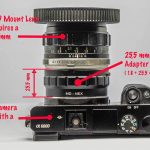
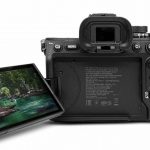
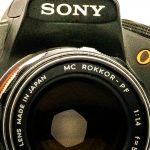


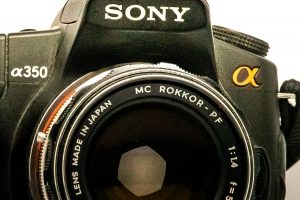
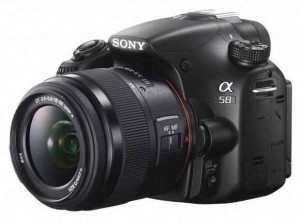
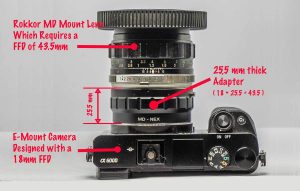


I own an Minolta 5d and a assortment of Minolta lens. I hope Sony releases an pro level camera. I contacted Sony but did not get any info out of rep.
where can i get one
Appreciate the info guys, thanks
Howdy there,Fantastic blogging dude! i am Tired of using RSS feeds and do you use twitter?so i can follow you there:D.
PS:Do you considered putting video to this web site to keep the visitors more interested?I think it works.Yours, Mandy Cheverton
Wonderful information about management. I have bookmarked this blog for my continued information.
Wonderful post about proxies. Thanks! Would a proxy also be worth it browsing the internet?
Thanks For Making This Website. Awesome Stuff!
This really is this kind of a terrific resource that you’re supplying and also you give it away for absolutely free. I take pleasure in seeing sites that comprehend the value of providing a prime resource for free. I really loved reading your post. Thanks!
PS. Strangely enough i stumbled across your blog, I guess someone on stumbleupon liked your site too. 🙂
Great info. I use the Sony A900 and A850 professionally.
My neighbor told me about an interesting story about how an everyday couple employed gardening to build a strong connection among the neighborhood. Perhaps we should use gardens to tap into the power of community.
Thanks for the good writeupIt in reality was a leisure account itGlance complicated to far added agreeable from you! However, how can we keep up a correspondence?